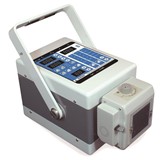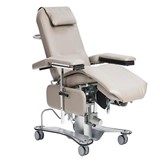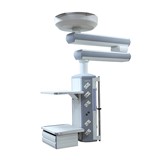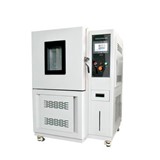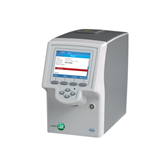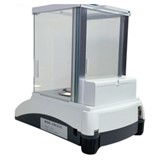Explore blood gas analyser prices in Australia. Get expert insights on models, compliance, and buying tips to help healthcare facilities make informed decisions.
Key takeaways
- Blood gas analyser prices in Australia range from $8,000 to $45,000+, depending on brand, test panel, and automation level.
- Point-of-care (POC) and benchtop analysers differ significantly in cost and sample throughput.
- Essential tests include pH, pCO2, pO2, lactate, sodium, potassium, and calcium, crucial for ICUs, EDs, and surgical suites.
- Annual maintenance costs can reach $2,000–$5,000, with sensor replacement and calibration kits as key recurring expenses.
- Devices must comply with TGA certification, NATA standards, and AS ISO 22870 for point-of-care testing.
- Finance and leasing options are available through medical equipment lenders and can lower upfront costs significantly.
- Used models are available from $3,500, but require careful inspection and may lack software support or warranty.
Introduction
Blood gas analysers are essential diagnostic tools used in ICUs, emergency departments, and operating theatres. They deliver critical measurements such as oxygen, carbon dioxide, pH, and electrolytes — essential for managing ventilation, acid-base balance, and organ function.
If you’re considering purchasing a blood gas analyser in Australia, this guide will walk you through the types, prices, features, maintenance requirements, and compliance standards you need to know to make an informed, cost-effective decision.
Types of blood gas analysers
There are two primary types of blood gas analysers based on usage environment and functionality:
1. Point-of-care (POC) analysers
These portable, cartridge-based systems are commonly used in emergency or bedside settings.
- Examples: Abbott i-STAT Alinity, Siemens EPOC
- Advantages: Fast turnaround, portable, minimal sample prep
- Ideal for: Rural hospitals, ambulances, mobile units
- Limitations: Limited test panel, higher cost per test
2. Benchtop analysers
Larger, lab-based systems used in high-throughput environments.
- Examples: Radiometer ABL800 FLEX, Siemens RAPIDPoint 500e
- Advantages: Broader test menu, batch processing, LIS integration
- Ideal for: Pathology labs, ICUs, surgical units
- Limitations: Requires trained staff, fixed location
Blood gas analyser prices in Australia
Blood gas analyser prices in Australia vary based on the type of device and whether the unit is new or refurbished. Below is a breakdown of the typical price ranges:
Point-of-care (POC) blood gas analysers
- Price range: $8,000 – $20,000
Benchtop blood gas analysers
- Price range: $20,000 – $45,000+
Refurbished or used blood gas analysers
- Price range: $3,500 – $15,000
According to GlobalData’s 2024 report, the Australian blood gas and electrolyte analyser market is projected to grow at 4.1% annually, reflecting rising demand in ICU settings and the broader uptake of point-of-care testing across the country.
How blood gas analysers work
These machines analyse whole blood samples to provide rapid diagnostics on:
- Acid-base status (pH, bicarbonate)
- Gas exchange (pCO2, pO2)
- Electrolyte balance (Na?, K?, Ca²?, Cl?)
- Metabolic markers (lactate, glucose)
- Haemoglobin-related values (tHb, SO2)
Some models offer co-oximetry and automatic quality control, reducing manual effort and errors.
Maintenance and consumables
Routine maintenance includes:
- Daily calibration (automated in most modern units)
- Sensor replacement (typically every 6–12 months)
- Cleaning protocols to prevent clotting/blockages
- Software updates for compliance and LIS integration
Common consumables:
- Calibration cartridges (approx. $200–$400/month)
- Sample syringes or cartridges
- Reagents and quality control fluids
Spare parts and upgrade considerations
Common replacement parts include:
- Electrode modules
- Tubing kits
- Pumps and valves
- Touchscreens or interface components
Always check:
- Availability of spare parts locally
- Software compatibility with LIS or HIS
- Vendor support life for older models
Financing and leasing options
If upfront capital is a concern, Australian healthcare businesses can explore:
- Equipment leasing (monthly payments over 3–5 years)
- Medical finance brokers (e.g. Medfin, Finlease)
- Low-doc financing for private clinics
- Operating leases with maintenance bundled in
Warranties and service contracts
- New models typically include 1 to 2-year warranties, with options to extend.
- Extended warranties and service-level agreements (SLAs) are strongly recommended, especially for regional or critical care locations.
- Check for 24/7 support availability, remote diagnostics, and local technician access.
Compliance and certification in Australia
When purchasing a blood gas analyser in Australia, ensuring full compliance with local regulatory and safety standards is essential — not only to meet legal requirements but also to maintain patient safety, data security, and laboratory accreditation. Below are the key compliance areas you need to understand:
1. Therapeutic Goods Administration (TGA) registration
All medical devices sold or imported for clinical use in Australia must be registered with the Therapeutic Goods Administration (TGA). This means the blood gas analyser must appear on the Australian Register of Therapeutic Goods (ARTG).
- Why it matters: TGA registration confirms that the device meets national safety, performance, and quality standards.
- Action: Always ask the supplier for the ARTG number and verify the listing via the TGA website.
2. AS ISO 22870 – Point-of-care testing (POCT) standard
If you intend to use the analyser for point-of-care testing (POCT) — such as bedside or emergency department use — it should comply with AS ISO 22870, which outlines specific requirements for quality and competence in non-laboratory settings.
- Why it matters: Ensures reliable results outside the central laboratory and supports accreditation efforts.
- Action: Confirm with the supplier that the analyser supports POCT protocols under this standard.
3. NATA accreditation compatibility
If your facility submits results for inclusion in official pathology records or shares data with hospitals, your analyser should be compatible with NATA-accredited laboratory workflows and reporting systems.
- Why it matters: The National Association of Testing Authorities (NATA) accreditation is crucial for laboratories performing diagnostic testing, ensuring results are recognised as accurate and legally valid.
- Action: Choose analysers that support integration with NATA-recognised LIS (Laboratory Information Systems) and quality assurance programs.
4. AS/NZS 3551 – Electrical safety for medical equipment
Blood gas analysers must comply with AS/NZS 3551, which governs the safety, maintenance, and management of medical electrical equipment.
- Why it matters: This standard ensures devices are safe for both operators and patients, covering aspects such as insulation, grounding, and regular servicing.
- Action: Verify the analyser's certification with your biomedical engineer or supplier.
5. Data security and patient record protection
If your analyser integrates with Electronic Medical Records (EMRs) or stores patient data, it must meet data protection standards equivalent to HIPAA-style security, particularly when transmitting or storing sensitive information.
- Why it matters: Protects patient confidentiality and complies with Australian Privacy Principles (APPs) under the Privacy Act 1988.
- Action: Ensure your analyser has data encryption, secure access controls, and complies with your facility’s IT security protocols.
Frequently asked questions
1. How often do I need to calibrate a blood gas analyser?
Most modern machines perform automatic calibration every 4–8 hours, but daily checks are still advised.
2. Is it worth buying a used analyser?
Yes, if from a trusted reseller with a service history, and you confirm ongoing software and spare parts support. Be wary of discontinued models.
3. Can I use one analyser across multiple departments?
Yes, especially high-throughput benchtop models. For portability, consider POC models with Wi-Fi connectivity.
4. What sample types are compatible?
Mostly arterial whole blood, but some models accept capillary or venous samples for limited parameters.
5. How long does it take to get results?
Most analysers deliver results within 1–3 minutes for a full panel.
Final thoughts
A blood gas analyser is a critical diagnostic tool that directly affects patient outcomes in acute and surgical care. Whether you're purchasing for a hospital, mobile clinic, or pathology lab, understanding the true cost of ownership, maintenance needs, and compliance obligations is key.
Always compare at least three vendors, request full cost-of-ownership quotes, and choose models that offer both performance and future-proofing through software and support.


-160x160-state_article-rel-cat.png)
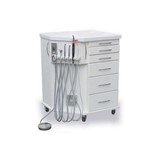




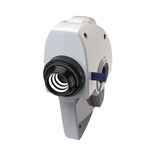

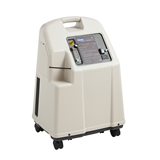


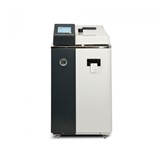

-160x160-state_article-rel-cat.png)


